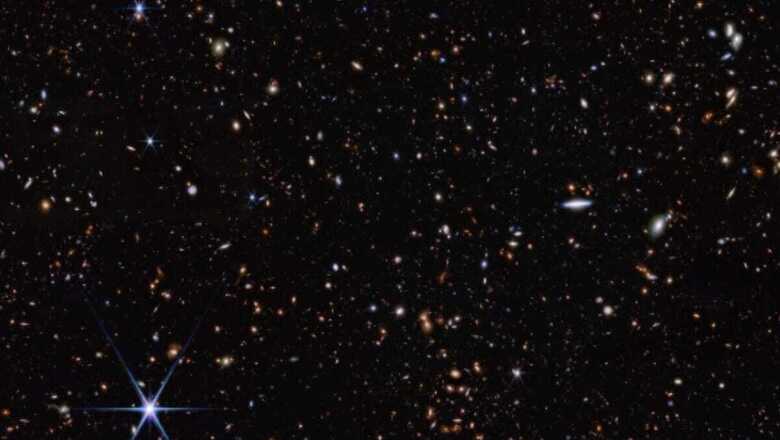
views
The famed James Webb Space Telescope (JWST), operated by NASA, has revealed the photos of the “earliest and the most distant” galaxy ever taken. The farthest galaxy is named JADES-GS-z14-0. As per Space.com, the light captured in the JWST photo had been travelling for 13.5 billion years on its way to reach humanity. Additionally, this galaxy turned out to be much brighter than what space scientists had earlier predicted. Interestingly, the galaxy JADES-GS-z14-0 is not the only galaxy spotted at the far end of the universe. It was closely followed by another galaxy named JADES-GS-z14-1, which takes second place in the list of the earliest galaxies ever seen by humanity.
While sharing photos of these far-off galaxies on Instagram, the JWST wrote, “For the last two years, Webb has been exploring the Cosmic Dawn, the period in the first few hundred million years after the Big Bang when the first galaxies were born.” It added that the telescope used the Near Infrared Spectrograph (NIRSpec) instrument to locate the galaxies.
View this post on Instagram
Commenting on it, an Instagram user wrote, “An extraordinary milestone in our exploration of the cosmos.” Another person wrote, “Look at the possible life that could be out there, those little pixels of light could be a whole alien race and we would never know.” Someone remarked, “GOSH, I can’t wait for Brian Cox’s interpretation of all this data on a future documentary series!”
A space enthusiast wondered, “What’s going to happen as we approach the moment of the Big Bang, which marked the beginning of the universe? Who will be alive to witness such a profound discovery for mankind, to understand how it all started from nothingness?”
The above-mentioned galaxy is named after the JWST Advanced Deep Extragalactic Survey (JADES) program. This program aims to gain vital insights into how stars, gas, and black holes evolved. In a press statement, Dr Francesco D’Eugenio of the Kavli Institute for Cosmology at the University of Cambridge, one of the team behind the discovery, said, “These galaxies join a small but growing population of galaxies from the first half billion years of cosmic history where we can really probe the stellar populations and the distinctive patterns of chemical elements within them.”



















Comments
0 comment